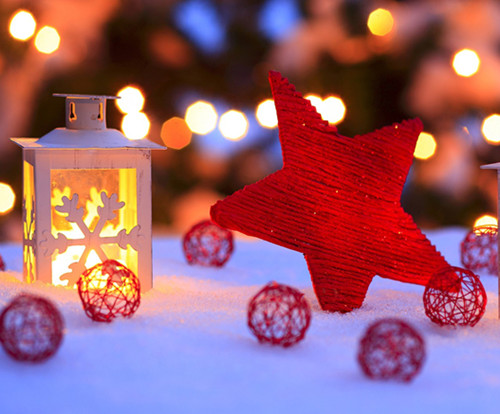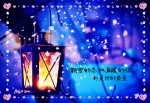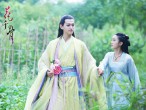
颐和园的简介英语作文【一】
秋分是表征季节变化的节气。秋分这天,太阳位于黄经180度,阳光几乎直射赤道,昼夜几乎等长。这时,四川盆地候温普遍降至22℃以下,进入了凉爽的秋季。“一场秋雨一场寒”。一股股南下的冷空气,与逐渐衰减的暖湿空气相遇,产生一次次降雨,气温也一次次下降。在川西高原北部,日最低气温降到0℃以下,已经可见到漫天絮飞舞、大地素裹银装的壮丽雪景。秋分以后,四川省雨量明显减少,暴雨、大雨一般很少出现;不过,降雨日数却反而有所增加,常常阴雨连绵,夜雨率也较高。唐代著名诗人李商隐“巴山夜雨涨秋池”的名句,生动形象地描绘出四川秋多夜雨的气候特色。我省盆地和凉山州秋多绵雨,湿害严重,对秋收、秋耕和秋种影响颇大。要抢晴收晒,理墒防渍,抓好“三秋”生产的质量和进度。同时,还要充分利用秋季阴雨寡照、土土壤墒情较好的气象条件,不失时机地大搞植树造林,努力提高树苗成活率。
颐和园的简介英语作文【二】
在我家的阳台上,我种了几棵含羞草,我每天按时给它们浇水、施肥。
有一天,我在给它们浇水时,无意间触碰到了含羞草的叶尖,它的叶片立刻垂了下去,我当时吓坏了,以为含羞草快要了。我伤心的去找妈妈,对妈妈说:“妈妈,我的含羞草没了!”妈妈却故作神秘地对我说:“你现在再去看看你的含羞草什么样子?”我带着疑惑的心情跑向阳台,结果被吓了一跳,含羞草与刚才判若两样,又恢复了生机;我纳闷极了,又去请教妈妈,妈妈对我说:“你自己到课外书中去找答案吧!”
为了解开这个谜团,我认真地开始查资料。“功夫不负有心人”,我终于在《十万个为什么——植物篇》里找到了答案。
原来,含羞草不是真的“害羞”,是因为在含羞草的叶柄基部,有一个能膨大的组织,叫做“叶枕”,叶枕里面充满水分,经常胀鼓鼓的,保持着很大的压力,而且下半部的压力更大。当人的手指碰到含羞草时,它的叶子受到震动,叶枕下部细胞里的水分就立即向上部和两侧流去。于是,叶枕下部就像泄了气的气球一样陷了下去,上部就像打足了气的气球一样鼓起来,这样叶柄就会下垂合拢,像害羞的小姑娘一样了。过了几分钟,叶柄下部又逐渐充满水分,叶子就重新张开,恢复原状。原来是这样,我心中的疑团终于解开了。
同学们,当你们遇到难题时,也可以到课外书上去找答案,要知道,课外书也是你们的良师益友!
颐和园的简介英语作文【三】
秋分昼夜不分长短,各地方的秋分习俗也各具特色。在我国民间有竖蛋、吃秋菜、送秋牛、粘雀子嘴等趣味习俗。
秋分祭月
秋分曾是传统的“祭月节”。如古有“春祭日,秋祭月”之说。现在的.中秋节则是由传统的“祭月节”而来。据考证,最初“祭月节”是定在“秋分”这一天,不过由于这一天在农历八月里的日子每年不同,不一定都有圆月。而祭月无月则是大煞风景的。所以,后来就将“祭月节”由“秋分”调至中秋。
据史书记载,早在周朝,古代帝王就有春分祭日、夏至祭地、秋分祭月、冬至祭天的习俗。其祭祀的场所称为日坛、地坛、月坛、天坛。分设在东南西北四个方向。北京的月坛就是明清皇帝祭月的地方。《礼记》载:“天子春朝日,秋夕月。朝日之朝,夕月之夕。”这里的夕月之夕,指的正是夜晚祭祀月亮。这种风俗不仅为宫廷及上层贵族所奉行,随着社会的发展,也逐渐影响到民间。
竖蛋
在每年的秋分那一天,世界各地都会有数以千万计的人在做“竖蛋”试验。这一被称之为“中国习俗”的玩艺儿,何以成为“世界游戏”,目前尚难考证。不过其玩法确简单易行且富有趣味:选择一个光滑匀称、刚生下四五天的新鲜鸡蛋,轻手轻脚地在桌子上把它竖起来。虽然失败者颇多,但成功者也不少。秋分成了竖蛋游戏的最佳时光,故有“秋分到,蛋儿俏”的说法。竖立起来的蛋儿好不风光。
秋分吃秋菜
在岭南地区,昔日四邑(现在加上鹤山为五邑)的开平苍城镇的谢姓,有个不成节的习俗,叫做“秋分吃秋菜”。“秋菜”是一种野苋菜,乡人称之为“秋碧蒿”。逢秋分那天,全村人都去采摘秋菜。在田野中搜寻时,多见是嫩绿的,细细棵,约有巴掌那样长短。采回的秋菜一般家里与鱼片“滚汤”,名曰“秋汤”。有顺口溜道:“秋汤灌脏,洗涤肝肠。阖家老少,平安健康。”一年自秋,人们祈求的还是家宅安宁,身壮力健。
拜神
秋分前后的民俗节日有二月十五日开漳圣王诞辰:开漳圣王又称“陈圣王”,为唐代武进士陈元光,对漳洲有功,后成为漳洲守护神。二月十九日观世音菩萨诞辰,每逢诞辰,信徒多茹素齐,前往各观音寺庙祭拜。二月二十五日三山国王祭日:三山国王是指广东省潮州府揭阳县的独山、明山、巾山三座山的山神,早年由潮州客家移民秋为守护神,因此信徒以客籍人士为主。
送秋牛
秋分随之即到,其时便出现挨家送秋牛图的。其图是把二开红纸或黄纸印上全年农历节气,还要印上农夫耕田图样,名曰“秋牛图”。送图者都是些民间善言唱者,主要说些秋耕和吉祥不违农时的话,每到一家更是即景生情,见啥说啥,说得主人乐而给钱为止。言词虽随口而出,却句句有韵动听。俗称“说秋”,说秋人便叫“秋官”。
粘雀子嘴
秋分这一天,我国很多地方的农村还有煮汤圆吃的习俗,除了自己食用外,还要煮二三十个不用包心的汤圆,插上细竹签放在田边地头,这就是“粘雀子嘴”,寓意是让雀子不要来破坏庄稼。
颐和园的简介英语作文【四】
在神奇的大自然中,有一种奇妙的草,叫做“含羞草”。含羞草属于簇生植物,高约40厘米左右。花的颜色是淡紫色,形状是球形。茎上有点儿淡紫色,分枝很多,具有倒刺毛和锐刺。叶子很长,椭圆形的,朝相反的反向成对地铺在茎上。嫩红色的茎衬着鲜绿的叶子,是那么的朴素而高雅。要是用手轻轻地碰它一下,它的叶子就会合上,整片都向下垂,呈含羞状,几分钟后便会恢复。
这究竟是为什么呢?我带着这个疑问继续观察含羞草。
我发现含羞草一经触动,就会合上叶子,这全靠它的“膨压作用”。因为在含羞草的叶柄基部,有一个充满水分的薄壁细胞膜组织,那就是叶枕。含羞草的叶子受到震动,叶枕下部的细胞里的水分就会立即向上部和两侧流去。于是叶枕下部凹陷,上部凸起,叶柄就下垂合拢了。
我还发现,含羞草不仅部分小叶在受到刺激时会合拢,而且还可以将信息传递给邻近的小叶上,以致整株小叶合拢,叶柄下垂。
通过查阅资料,我知道了含羞草为豆科多年生草本或亚灌木。又名知羞草、呼喝草、怕丑草。耐寒性较差,原产美洲热带地区。含羞草的花、叶和荚果均具有较好的观赏效果,成为阳台、室内的盆栽花卉,在庭院等多处地方都能种植。我还知道含羞草受到震动后,不单单会下垂合拢,有时还会向上卷曲。它的“害羞”是一种保护自己的技能,它不只是被手碰到的时候才会害羞,每逢遇到强风或者大雨,它都会害羞地闭起叶子。
观察含羞草让我懂得了只要我们用心观察和思考身边的一些事物,就一定能发现其中的奥秘。
颐和园的简介英语作文【五】
??颐和园英语作文范文The Summer Palace can be divided into two parts: Longevity Hill and Kunming Lake. The whole garden covers an area of 290 hectares, of which three- fourths consists of a lake and rivers. This imperial garden features 3,000 room-units and covers an expanse of 70,000 square meters with more than 100 picturesque spots of interest. The layout of the Summer Palace includes three groups of architectures: palaces where the emperor attended to state affairs, resting palaces of the emperor and empress, and sightseeing areas. Entering the East Gate we will come the office quarters. Entering the East gate we will come to the office quarters. The annex halls on both sides were used for officials on duty.
This is the Gate of Benevolence and Longevity. Above the door there is a plaque bearing the same name in both Chinese and Manchurian characters. The gigantic rock in the foreground is known as Taihu rock, or eroded limestone, quarried in Jiangsu Province and placed here to decorated the garden.
On the marble terrace sits a bronze mythical beast, known as Qilin or Xuanni. It was said to the one of the nine sons of Dragon King. A point of peculiar interest is that it has the head of a dragon, antlers of a deer, the tail of a lion and hooves of an ox, and is covered with a unique skin. IT was considered an auspicious creature that brought peace and prosperity.
This grand hall is the Hall of Benevolence and Longevity. It was built in 1750, and was known as the Hall of Industrious Government. Emperor Qianlong ruled that the halls where monarchs attended to state affairs would be named after them. After the rebuilding of the Summer Palace, the hall was renamed, suggesting that benevolent rulers would enjoy long lives.
The arrangement of the hall has been left untouched. In the middle of the hall stands a throne made of sandalwood and carved with beautiful designs. In the background there is a screen carved with nine frolicking dragons. On either side of the throne there are two big fans made of peacock feathers, two column-shaped incense burners, crane-shaped lanterns and an incense burner assuming the form of Luduan, a mythological animal which was suppose to have the power to prevent fire. The small chambers on eight side were where the Emperor Qianlong and Empress Dowager Cixi rested and met officials on formal occasions.
On the verandah in the foreground of the hall there are bronze statues of dragon and phoenixes which served as incense burners on major occasions. They are hollow and smoke comes through holes on their backs. Also on the veranda are Tai Ping (Peace bronze water vats made during the reign of Emperor Qianlong. As a precaution in case of fire, a fire was lit underneath the vats in the winter to keep the water in them from freezing.
(At the entrance of Garden of Virtuous Harmony
Outside the East Gate–in front of the Hall of benevolence and Longevity- in front of Garden of Virtuous Harmony-in front of the Grand Theater Building- a lakeside walk from the Garden of Virtuous Harmony to the Hall o Jade Ripples- in front of the o Jade Ripples- in front of the Yiyunguan (Chamber of Mortal Being-Hall of happiness and longevity- in front of the Yaoyue (Chamber of Mortal Beings-Hall of Happiness and Longevity-in front of the Yaoyue (Inviting the Moon Gate of the Long Corridor- strolling along the Long Corridor- visiting an exhibition of cultural relics- in front of the Hall of Dispelling Clouds- inside the Hall of Dispelling Clouds- atop the Tower of Buddhist Incense- on a hilltop leading from the back door of the Tower of Buddhist Incense- on a hilltop leading from the back door of the Tower of Buddhist Incense- inside the Garden of Harmonious Interest –outside the south gate to Suzhou Shopping Street- atop the stone bridge inside the Suzhou shopping street –on the road from the south gate of suzhou shopping street- on the road form the south gate of suzhou shopping street to the marble boat- in front of the ruins of the Garden of complete spring –along the lakeside by the marble boat-boating on the Kunming Lake-leaving out through the East Gate.
(Outside the east gate
Ladies and Gentlemen:
Welcome to the Summer Palace. (After the self-introduction of the guide -interpreter I hope this will be an interesting and enjoyable day for you.
During our tour, you will be introduced to time honored historical and cultural traditions, as well as picturesque views and landscapes.
The construction of the Summer Palace first started in 1750. At that time, the Qing Dynasty was in its heyday and China was a powerful Asian country with vast territories. The monarch in power then was Emperor Qianlong. With supreme power and large sums of money, he summoned skillful and ingenious artisans from all over the country to carry out this construction work in honor of his mother's birthday. After 15 years and one seventh of the nation's annual revenue spent, the Garden of Clear Ripples was completed and served as a testimony to China's scientific and technological achievements. In 1860, this vast royal garden was burnt down along with the Yuanming Yuan (Garden of Perfection and Brightness by Angol-French allied forces. In 1888, Empress Dowager Cixi reconstructed the garden on the same site and renamed it the Garden of Nurtured Harmony (Summer Palace. Characterized by its vast scope and rich cultural embodiments, the Summer Palace has become one of the most famous tourist sites in the world.
This is the main entrance to the Summer Palace-the East Gate On top of the eaves of the door there is a plaque bearing a Chinese inscription which means "Garden of Nurtured Harmony", whose calligrapher was Emperor Guangxu. The gate that you are now entering was used exclusively by the emperor, the empress and the queen mother. All others used the side doors.
颐和园的简介英语作文【六】
我喜欢简雅的百合,也喜欢妖艳的玫瑰,但我最喜欢的还是那默默无闻的含羞草。
春天的含羞草就像一个清纯的小姑娘。它几乎每隔一天就会长出一片青绿色的小叶。在春天四月份时,含羞草已长满了小叶子,就像阶梯一样,整齐得排列在两边。五月份时,含羞草叶子变大,一株含羞草就像一把扇子。每天,我都会情不自禁地碰一下含羞草,每当指甲触动它的叶子的一刹那,叶子就害羞的缩了进去。
夏天,含羞草那嫩绿的叶子变深了,含羞草叶片也变得茂盛了。更吸引人的是,含羞草开出了粉红色的、可爱圆圆的小花。花朵旁边也有着正在等待开放的花苞。花苞旁边有三朵小花紧紧地靠在一起,就像三个形影不离的好朋友。花朵底下的茎,长着细细的、尖尖的小刺。我试图碰了它一下,谁知这小小的刺还非常的扎人。
秋天,含羞草结果了,它的果实一颗颗连在一起。身上像穿了一件透明带着刺的衣服。过了一个星期,果实全都落地上了。本来我以为那是没用的东西,就把它往泥土里一扔。
冬天了,泥土里长出了三株含羞草,那时,我心里想:早知道不把果子扔了。可现在,没希望了。
你知道含羞草为什么会害羞吗?这种开闭的原因是,含羞草的叶柄基部有个叫做“叶枕”的膨大部分,叶枕内生有薄膜细胞,当叶片受到外界触碰时,振动传到叶枕,这时薄膜细胞内的\'细胞液立即向细胞间隙流去而减少了细胞的膨胀能力。叶片即自动闭合,叶柄和嫩枝亦同时下垂,当“风平浪静”数分钟后,它们又恢复如初了。现在你们知道了吧!
含羞草不光有观赏的应用,它还有做药材和预测地震的应用。你们看,这样的草算是十全十美了吧!
颐和园的简介英语作文【七】
??性的呼唤简介及读书笔记作者:杰克伦敦
改写:何碧珠
出版社:中国东方出版社
内容简介:
巴克遇到了邮差是个懂狗的人,他可以公正的处理狗儿之间的纠纷,也知道巴克是只不可多得的雪橇狗,并不时的给予 指导让巴克很快的适应北方的生活,但命运乖桀并不会因此停止,它再度换主人,这次是无知的二男一女完全不懂狗,让狗儿吃了很多苦,在生交关之际,巴克遇 上了桑顿,他用爱心照顾巴克,狗儿巴克感受到新主人的爱,也积极的回报自己的爱,这是人与狗之间惺惺相惜的.情谊,让巴克在回归大自然时有了牵挂,但巴克终 究会去寻找它野性本能中的归处。
心得:
杰克.伦敦擅长以动物来比喻人类的行为,他对北国的环境和对狗的了解深入,随着他所描写北国恶劣环境对人们的不便及寒冷对生理伤害的故事情节让人宛如深入 其境,在描写每只雪橇狗的性格和行为时栩栩如生,是一部老少咸宜的小说。在野性的呼唤中,主角巴克本来是一只养尊处优、美丽骄傲的南方大狗,在它回归大自 然的过程中受到贪婪人类的调教,逐渐找回它液中所遗传的野性,在这艰难的过程中,是适者生存的自然法则引导巴克如何在人、狗、大自然中寻找共存共生的平 衡点。当巴克被亲近的人卖掉,乃至人类拿着棍棒驯服它时,它以它的本能适应新的生活,它的新生活开始于北方严寒的天气及险恶的地形,拉雪橇是它的工作,它 由其它狗儿身上学习北方的生活技巧,进而争夺狗群的领导权,并展现它的超强领导力,这领导力是它天生的魅力,也是它在艰难环境中学习而来的成果。
颐和园的简介英语作文【八】
秋分,农历二十四节气中的第十六个节气,时间一般为每年的9月22或23日。南方的气候由这一节气起才始入秋。
我国古籍《春秋繁露?阴阳出入上下篇》中说:“秋分者,阴阳相半也,故昼夜均而寒暑平。”秋分之“分”为“半”之意。秋分“秋分”的意思有二:
一是太阳在这一天到达黄经180度,直射地球赤道,因此这一天24小时昼夜均分,各12小时;全球无极昼极夜现象。秋分之后,北极附近极夜范围渐大,南极附近极昼范围渐大。
二是按我国古代以立春、立夏、立秋、立冬为四季开始的季节划分法,秋分日居秋季90天之中,平分了秋季。














